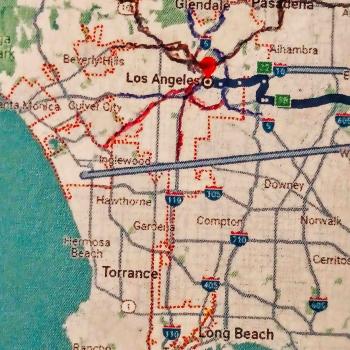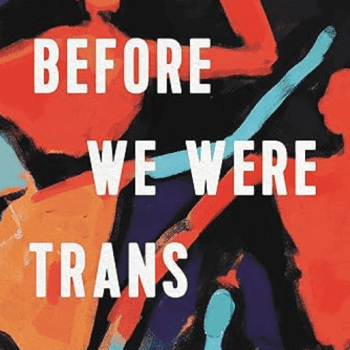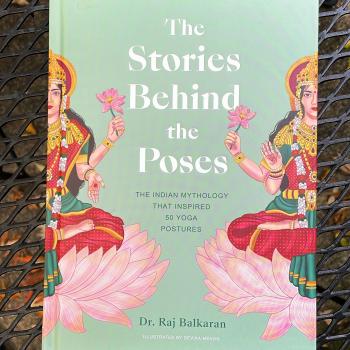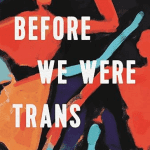What is a billion? What is a trillion? If you have an intuitive grasp of math, you may have a fairly good sense of what those numbers mean. For the rest of us, including myself, the scale of numbers at this level can be difficult to comprehend. Another way of talking about a billion is that it is “one thousand million.” Another way of talking about a trillion is that it is a “one million million.” (Does that clear it up? Or is your brain starting to blur?)
The reason I am asking you to think about math is that about a month ago headlines announced that Apple had become “the first publicly traded American company to be worth more than $1 trillion.” Last week, the news broke that Amazon has also passed the $1 trillion mark. Part of what passing the $1 trillion mark means is that, “Amazon’s founder and chief executive, Jeff Bezos, is worth nearly as much as Bill Gates and Warren E. Buffett put together.” That whole trillion thing really matters: one million million.
In a poignant headline, The New York Times noted that, compared to Apple’s $1 trillion valuation, “Add Disney to Bank of America and … You’re Halfway There.” Most of the time, we don’t think of Disney and Bank of America as small potatoes, but there you go. Drawing from an interactive website The New York Times designed, I will give you five more quick points of comparison:
- “If you combine Macy’s ($11.6 billion), Ralph Lauren ($10.5 billion) and Harley-Davidson ($7.1 billion). Together, they make up 3 percent of Apple’s net worth.” You would need to add another “108 of the other smallest S&P 500 companies”—Under Armour, Kohl’s, Xerox, Western Union, Whirlpool, and 103 similarly sized companies—to get close to $1 trillion.
- Both Apple and now Amazon are both independently worth nearly as much as the “big four” American banks combined: Bank of America, Citigroup, JPMorgan Chase, and Wells Fargo together are worth $1.168 trillion.
- $1 trillion is “more than all the major automakers in the world” ($964 billion).
- $1 trillion is “nearly as much as most of the world’s airlines and aviation companies combined.”
- $1 trillion is “more than the entire American media industry, including Netflix, Comcast and Disney, and all the major news publishers and TV channels” ($848 billion). As a side note, keep your eye out for Apple to invest some of that $1 trillion to launching its own media empire to provide content for its devices.
I will confess that my first reaction to the news that Apple was worth $1 trillion was to be impressed. It is a mind boggling accomplishment, especially considering that two decades ago, Apple was near bankruptcy. But as I dove deeper into the news coverage, I found myself sickened by two angles. First, many people were asking what Apple was going to do to continue to grow. Second, investors were debating whether Apple or Amazon would be the first company to be worth $2 trillion. For some people, within our current system, there is never enough. There is only the relentless demand to grow bigger and bigger and bigger.
Now, don’t get me wrong: when I consider, huge corporations such as Google, Amazon, Facebook, and Apple, I can understand why they earn a lot of money. These companies regularly make my life easier in multiple ways. But as a society, we need to confront the ways that our democracy is being undermined as wealth and power are consolidated in the hands of too few people. And while some people and groups have always had more than others, the wealth gap has grown disturbingly large. Consider that, “In 1975, 109 companies collected half of the profits produced by all publicly traded companies. Today, those winnings are captured by just 30 companies.” An additional part of where the record profits are coming from is that, “The difference between how much it costs American companies to make their products and how much they sell those products for…is at its highest level since at least 1950.” So these companies don’t have to charge us so much, but high prices mean more profits for their stockholders.
Now, having spent some time exploring the lofty heights of the trillion-dollar mega-corporations, I will ask you to descend with me to the lowly realm of the mere billionaires. In the same way that we sought to wrap our minds around a trillion, let’s do the same for a billion. Here I will be drawing from a helpful book by the economist Milanovic Branko, Global Inequality: A New Approach for the Age of Globalization (Harvard University Press, 2016):
- If a magical genie granted you a wish to receive a dollar each second, it would take you a mere 11.4 days to become a millionaire. But even at the rate of a dollar per second, it would take almost 32 years for you to become a billionaire.
- Or suppose a rich relative died and left you either $1 million or $1 billion, and you decide to celebrate by spending $1,000 every day. It would take you less than three years to spend a $1 million at the rate of a thousand dollars per day. In contrast, it would take you “more than 2,700 years to blow your inheritance” in the case of $1 billion (42).
It really matters that some mega-corporations are passing the trillion-dollar level. But I don’t want to downplay the billion-dollar level either. That matters as well.
There are slightly less than 1,500 billionaires in the world. That means a “super-tiny group of individuals and their families control about 2 percent of world wealth. To put it differently, these billionaires own twice as much wealth as exists in all of Africa” (41-42).
As some of you have surmised, this is my annual “sharpen-your-pitchforks” post. But allow me to be clear: I am not advocating an extreme egalitarianism in which everyone must have the same despite some people working harder than others. (Fairness arguably does not require everyone being equal.) But I am advocating against the other end of the spectrum: extreme inequality.
Our current system allows the rich to get richer to the exclusion of everyone else. In our country “income grew by 61% from 1980 to 2014 but the bottom 50% was shut off from it” (Alvaredo 85). Hauntingly, “the rise of the top 1% mirrors the fall of the bottom 50%” (86).
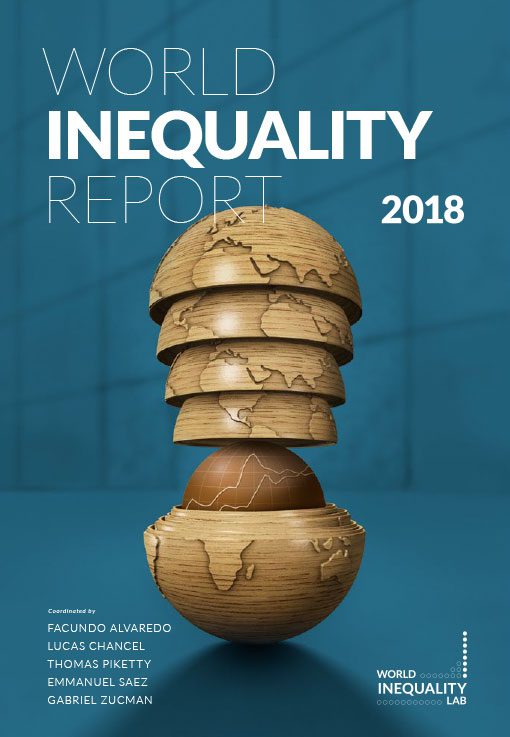 I and many other people started paying more attention to inequality after the publication of the economist Thomas Piketty’s 2013 book Capital in the Twenty-First Century. And I was interested this year to discover Piketty, along with four other economists, had published a follow-up book through Harvard University Press titled World Inequality Report 2018. I will share with you a few of the highlights of what they are discovering.
I and many other people started paying more attention to inequality after the publication of the economist Thomas Piketty’s 2013 book Capital in the Twenty-First Century. And I was interested this year to discover Piketty, along with four other economists, had published a follow-up book through Harvard University Press titled World Inequality Report 2018. I will share with you a few of the highlights of what they are discovering.
One of the most important points is that, “income inequality has increased in nearly all world regions in recent decades, but at different speeds.” That finding is significant not only because of how widespread a problem inequality is, but also because economists can extrapolate from the different speeds at which inequality is spreading about what policies and practices tend to increase and decrease the speed of inequality (2).
Of particularly interest is the difference between the United States and Western Europe:
which had similar levels of inequality in 1980 but today are in radically different situations. While the top 1% income share was close to 10% in both regions in 1980, it rose only slightly to 12% in 2016 in Western Europe, while it shot up to 20% in the United States. Meanwhile, in the United States, the bottom 50% income share decreased from more than 20% in 1980 to 13% in 2016. (4)
And while those trends are troubling, it will be much worse if the same trends continue. As the saying goes, “One definition of insanity is to keep doing the same thing and expect a different result.”
Here’s another similar data point: in the United States today,
The bottom 90%—a group of almost 145 million families who possess approximately $94,000 on average—collectively own about as much of the total household wealth (22%) as the 161,000 families who are included in the top 0.1%; their average wealth was approximately $82 million, 845 times larger than the bottom 90%…. The top 0.1% is about as large as the income share of the top 1% (237).
Some people having more than others can arguably be considered fair, but some people having 845 times more than others creates an unequal playing field.
Our national economy reflects the extreme wealth disparities characteristic of a new Gilded Age. The good news is that since we have had this problem before, we can learn from the past. “The Roaring Twenties saw a huge rise in wealth concentration…. But the impact of the Great Depression, and the New Deal policies implemented under Franklin Roosevelt’s presidency, quickly saw this trend reverse” (213).
So what might we—and our elected officials—do, if we were to find the political will to make a change? The short answer might be to follow the policies and practices that historically have been shown to decrease wealth inequality in various parts of the world.
Three of the proven tools at our disposal are:
- A progressive income tax system that charges a higher percentage as one’s income increases. Recently, our tax system has been regressing in the opposite direction, exacerbating inequality. (13)
- “A global financial register recording the ownership of financial assets, which would deal severe blows to tax evasion, money laundering, and rising inequality” (14). Economists have a plan to make that idea a reality through the already-existing system of Central Security Depositories (296).
- Governments needs to be adequately funded to invest in “education, health, and environmental protection both to tackle existing inequality and to prevent further increase” (15).
These may seem like lofty goals, but they are the sort of building blocks required if we have any hope of moving away from chaos and conflict—and toward beloved community.
In that spirit, I was interested to see that, in addition to the news of mega-corporations like Apple and Amazon surpassing a valuation of $1 trillion, there was a related headline this week that in response to Amazon buying Whole Foods, there is a renewed effort to get Whole Foods employees to unionize.
It is impossible to predict whether that particular unionization effort will succeed—just as there is no guarantee that the struggle to reverse wealth inequality (to secure a “New” New Deal) will succeed. But what remains within our control is whether we sit back and accept the current trajectory of rising inequality—or whether we do everything within our power to build the world we dream about—a dream that the 6th Principle in my tradition of Unitarian Universalism calls “The goal of world community with peace, liberty, and justice”—not merely for some—but “for all.” Peace, liberty, and justice don’t require everyone to have the same; they do require, however, everyone at least playing in the same ballpark and hopefully on a more level playing field.
I invite you to open the imagination of your mind and the compassion of your heart to what becomes possible whenever we all join together in solidarity across ever-increasing circles of inclusion. Together we can accomplish far more than any of us can alone.
The Rev. Dr. Carl Gregg is a certified spiritual director, a D.Min. graduate of San Francisco Theological Seminary, and the minister of the Unitarian Universalist Congregation of Frederick, Maryland. Follow him on Facebook (facebook.com/carlgregg) and Twitter (@carlgregg).
Learn more about Unitarian Universalism: http://www.uua.org/beliefs/principles





